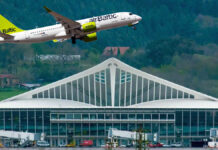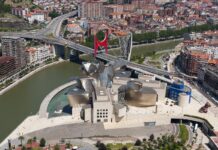This article was translated by John R. Bopp
Since the blog began, we’ve been bringing you all types of reports trying to explain the causes of the extraordinary Transformation of Bilbao, which has turned this Basque capital into a case study.
Many of them focus the explanation on the opening of the Guggenheim Museum, and some even go so far as to talk of a “rain of millions” that came from Europe (a quite unfunny joke). Others, the minority, bring up the real reasons that are making (because the Transformation isn’t finished) the Bilbao metropolitan area change so radically.
So today we bring you an article published on Apolitical, written by “six hands”: Linda Bilmes, Senior Lecturer at the Harvard Kennedy School, Fernando Monge, Senior Associate of the Bloomberg Harvard City Leadership Initiative, and Jorrit de Jong, Senior Lecturer at the Harvard Kennedy School.
As we stated in the title, they have perfectly understood the keys that explain this radical change, and they discuss them, brilliantly, in the article. We highly recommend reading it.
But we do have two things we’d like to point out, as we considered them important, at least to us, not that these affect the main point of the article.
The first is regarding an omission. There is a key person in getting this project going who is not named and who should at least appear alongside Mayor Ortuondo and Minister Borrell. We’re referring to the then-Councilor of Transport and Civil Works of the Basque Government, Josu Bergara. It was during a visit with Borrell at the ministry’s headquarters, which were located on Cercas Bajas Street in Vitoria at the time, where the Bilbao Ria 2000 inter-institutional body got its start. That was the bell that sounded the start of a project on which the Biscay Government, headed by José Alberto Pradera; the City of Bilbao, with Josu Ortuondo as mayor; and the Basque Government, via Councilor Josu Bergara, would work so hard. As was said at the time, “it was time for Bilbao”.
The second issue is regarding concepts. The article, when referring to the Biscay taxing and financing system as being “one of four Spanish provinces granted special fiscal rights under Spain’s democratic constitution”. The current Spanish Constitution grants nothing. Actually, what it does is recognize the “historical rights” that belong to the “chartered”, or foral, territories. That is, the Spanish Constitution recognizes the rights the Basques south of the Pyrenees had before the Constitution itself was even approved.
The specific text discussing this is the First Additional Provision, which says “The Constitution protects and respects the historic rights of the territories with traditional charts (fueros). The general updating of historic rights shall be carried out, where appropriate, within the framework of the Constitution and of the Statutes of Autonomy”.
The specific way this chartered régime is carried out as regards taxing and financing is stated in the Statutes of Autonomy of the Basque Country and the Improvement of the Fueros of Navarre.
It’s clear that these niggles do nothing to change the overall meaning of the article. But we thought they should be pointed out, for the issue of recognizing the work done and, for the Basques, the importance of the difference between “own” and “granted”.
In any case, it is a pleasure to read articles like this.
Apolitical – 7/8/2019 – Great Britain
Bilbao was built on innovation — can it repeat the miracle?
Last November Bilbao was named Best European City by The Academy of Urbanism, adding to a long list of prizes the city has collected over the past decade. It was yet another reminder of the city’s emergence from a deep economic, political and social crisis, leaving behind its industrial past to become a thriving cultural and economic engine for the Basque Country and Spain.
(Follow) (Automatic translation)
(Picture credit: Unsplash)
Last Updated on Dec 20, 2020 by About Basque Country
































